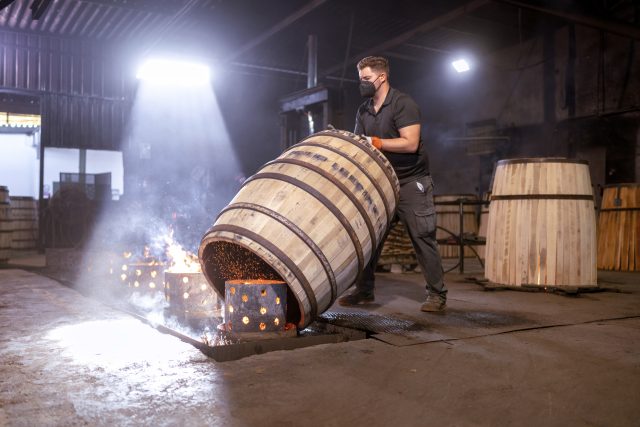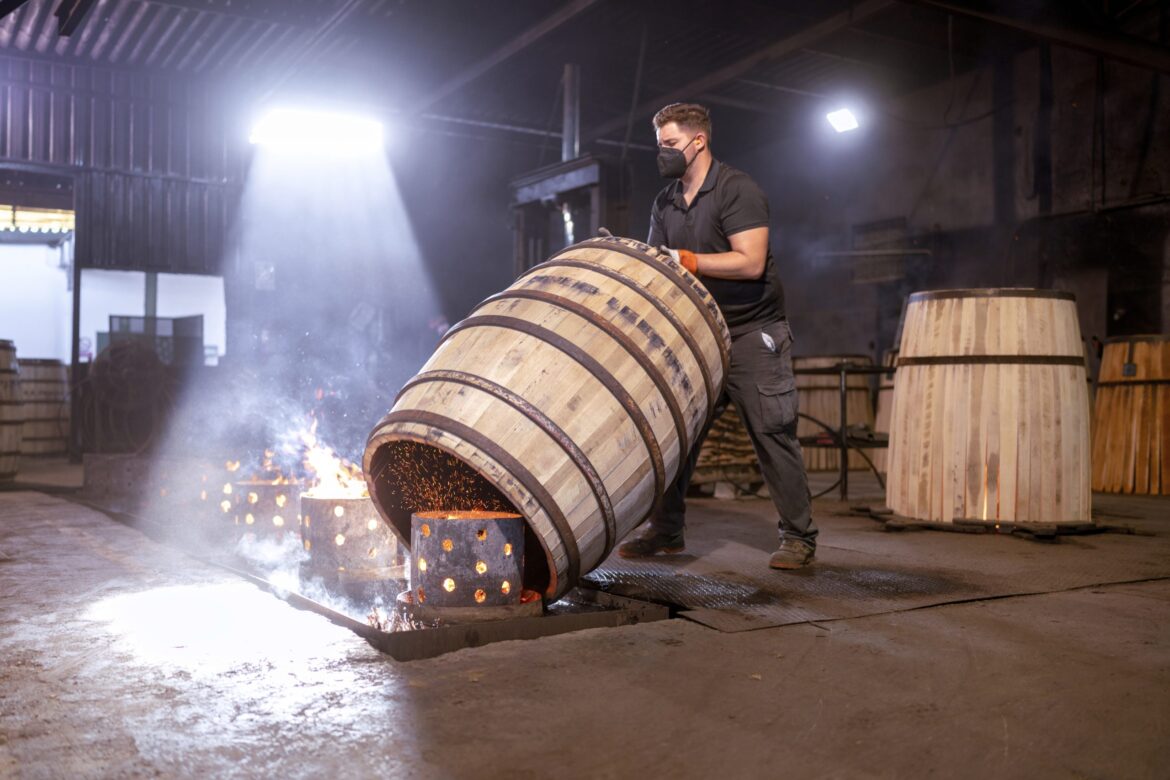Vintners are missing a trick if they are not speaking to their coopers about ‘forest blending’, which can elevate your final product, one high-end Priorat producer tells Sarah Neish.

Historically, winemakers have selected barrels by the source of their wood, but a coopering revolution is underway, offering fine winemakers a host of new tools to perfect their blends.
Roger Oferil, winemaker for Priorat producer Merum Priorati, told the drinks business that it’s more crucial than ever “to maintain a dialogue with your barrel supplier”, who can lend their expertise to help create a bespoke result for your specific wine. “We can help each other,” he said.
A leading expert in the vinification of Grenache, Oferil revealed he recently began ageing his Grenache wines “in a white barrique”, which was raising eyebrows in the Catalan region.
“I’m looking to integrate the oak, not achieve high toasted aromas, and Grenache is better in a white barrique,” he said.
According to Oferil, “in the past we used to buy barriques based on the forest. Limousin, Tronçais, Allier etc. Now I prefer to buy by producer style.”
Cherry picking
The unique style or stamp of a cooperage is increasingly achieved through the blending of different forests in one barrique. Just as a winemaker adjusts the percentage of each grape variety used in a blend, barrel makers are adjusting their own proportions: “1% of this forest, 1% of that forest,” Oferil explained.
Limousin oak, for example, is known for its ability to impart high levels of structural tannins and spicy notes of cinnamon, nutmeg, cloves and pepper, along with woody depths of leather and tobacco. Tronçais oak, on the other hand, is known for its very fine grain, which allows for a gradual and controlled release of tannins and flavour compounds, resulting in a more subtle and refined contribution to the wine.
The forest-blend movement is something that has been gathering pace “for the last 15 years” but not all Spanish winemakers are wise to the benefits it can bring.
“Before, barrel producers were selling forests, not styles,” Oferil stressed. However, a cooper can now cherry pick advantageous attributes from any number of different forests to build the perfect vessel for a wine, something the Priorat winemaker is making full use of.
“If we accept that Priorat is at the top of the wine world, and we do, then just like with Châteauneuf-du-Pape or with Burgundy, we need to age. It’s just a question of how,” he said.
“Talk to your supplier,” he added, because they may suggest something you’d never thought of, such as housing your Grenache wines in white barriques.
“For my wines, the best oak is coming from sandy soils. We work with three different barrique suppliers to help procure this.”
Fresh outlook
Merum Priorati, owned by the Pere Ventura family, is renown for its three luxury reds: Inici (beginning), Destí (destiny) and El Cel (heaven or sky), carrying a retail price of €25, €45 and €90 respectively.
“In the ’90s people were in love with Priorat because of the full bodied toastiness. Now we can still make a full body but with freshness,” Oferil said. “I always look for a long finish in my wines. For me, as soon as it’s long it’s honest.”
At the moment there is a red hot trend in the region for using Carignan in pursuit of that freshness “which is something you will get straight away with Carignan,” said Oferil. “But we can’t just throw away Priorat’s last 30 years of dedication to Grenache. For me, Grenache must always be the main protagonist. When someone in London or in Brussels goes to a restaurant and orders a bottle of Priorat wine, you need to accept that they want that recognisable, familiar experience. We need to be close to our customers.”
At Merum Pirorati, “every component used in the blend has its own pressed wine,” said Oferil. “And we like to age the wines with the lees for a minimum of two winters in barrel and a further year of ageing in the bottle.”

Black slate
He describes Priorat wines as having “a kind of gentle intensity, silky and velvety,” as a result of the region’s black slate soils which give “the perfect conditions for a long-maceration red wine.”
At 350m above sea level, the small town (600 residents) of Porella, where Merum Priorati’s winery and vineyards are located, is fast gaining a reputation for its quality Grenache. “More and more the town is becoming famous for the freshness of the wines,” said Oferil. “The sea is just behind the mountains so the vines receive the fresh air in the afternoon. We also get a lot of storms because the warm weather from the land meets the cold air from the sea, which gives us more rain.”
One further ‘forest’ influence in Priorat can be found in the pomegranate notes present in some vintages of Merum Priorati’s wines. “Every family in Priorat has at least one tree of pomegranate,” Oferil said.
Merum Priorati is not the only producer paying closer attention to its barrels. Chile’s Viña Carmen told db that it was currently trialling 12 different coopers, storing the same wine in each of their barrels for a period of 12-14 months in order to determine the best oak for Cabernet Sauvignon from the Maipo Valley.
“I’m trying to find the best way for the wines,” said winemaker Ana Maria Cumsille. “Sometimes a good supplier’s barrel works for one wine and not for another. I always say to them ‘it’s not a problem with your barrel, it’s just not right for my wine’.”
Related news
New luxury wine train coming to Spain in 2026
Ramón Bilbao becomes official partner of Spain’s national football teams
Why hometown hero Garnacha still matters in northeast Spain


Dining and Cooking